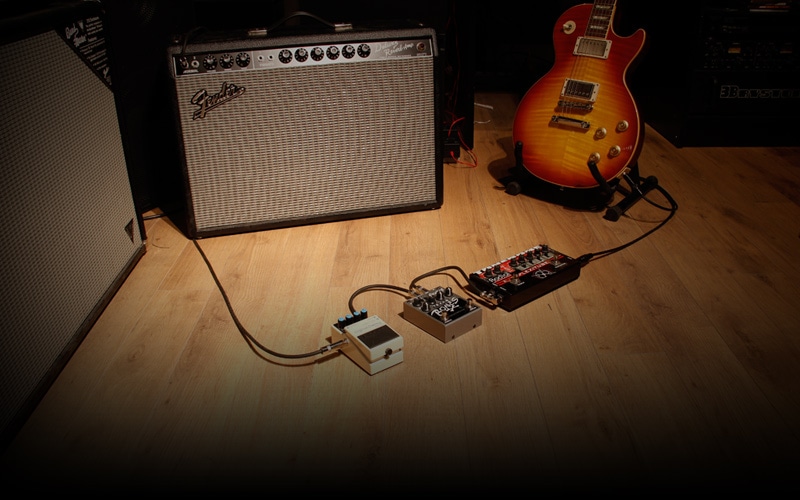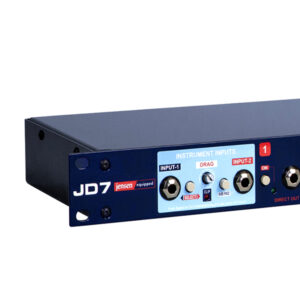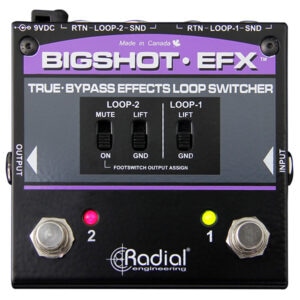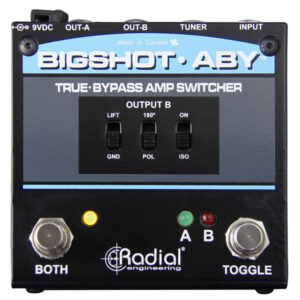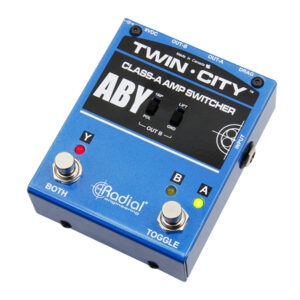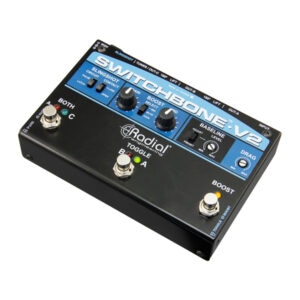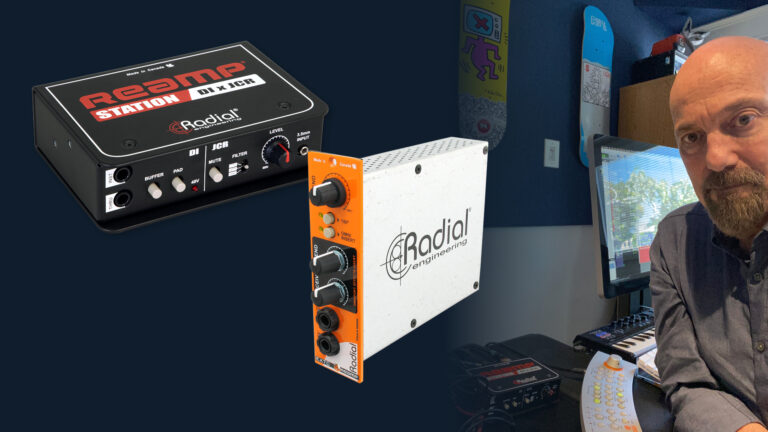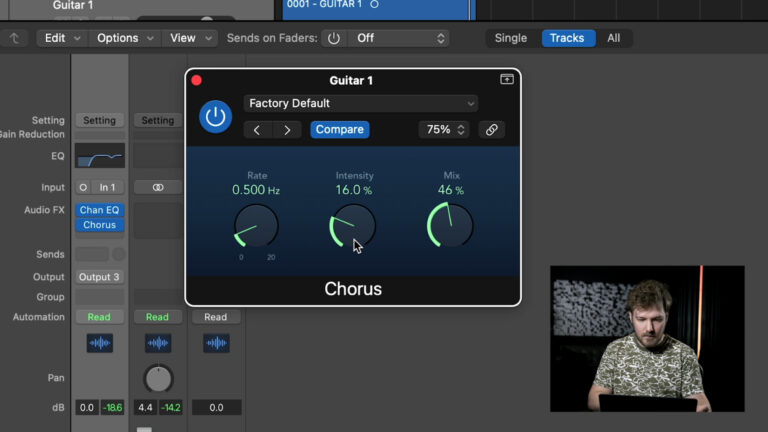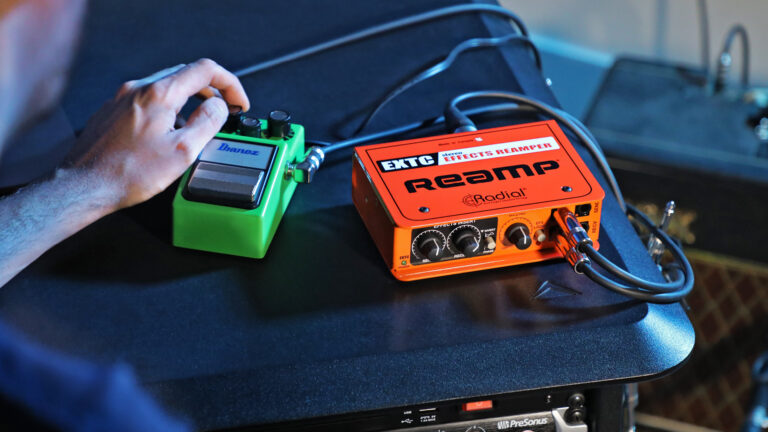Eliminate noise in your guitar rig
With guitar rigs, connecting several pedals and amps together can often lead to noisy setups. Guitarists will sometimes turn to using noise gates as a means of trying to eliminate the problem. But these devices not only rob tone, they hamper the guitar’s attack time and limit natural sustain. The following page gives you several recommendations that can help eliminate noise.
- Lowering noise at the source
- Managing your power source
- Eliminating ground loop
- Buffers and managing impedance
- Plugging it all together
Lowering Noise at the Source
Electric guitars are very simple devices that for the most part employ technology that has been
around for over 100 years! Moving a piece of wire in and out of a magnetic field generates
current. This is the basis of the electric guitar pickup. Once the signal is generated, it is sent to
the pickup selector switch, tone and volume controls using simple unshielded wires. As guitars
are considered high impedance devices, they are susceptible to noise. Furthermore, since the
pickups are essentially ‘open’ to capturing noise from surrounding electromagnetic sources
such as power supplies, ballasts and transformers, fending off noise before it is amplified can
be advantageous.
A good option is to add a copper or foil shield inside the pickup and electronics cavity of the guitar. Copper shielding with an adhesive on one side works best. Be careful to push the copper tight against the wood to ensure you do not cause any electrical shorts. You should then shield the pickguard if you have a Strat type guitar. All of the shields should then be tied together (soldered) to create a uniform shell around the electronics. This is then grounded at the guitar jack.
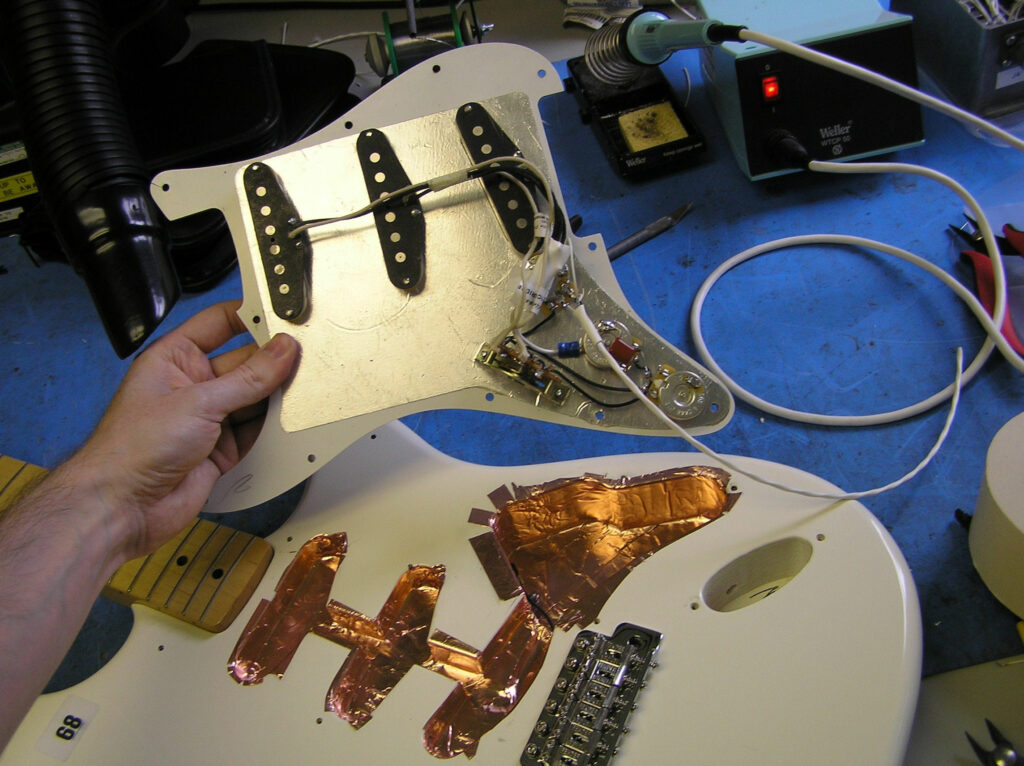
Using high quality coaxial guitar cables will also help. Some of the better cables incorporate a
conductive plastic over the conductor and then a served copper shield. This combination tends
to produce less microphonics or self-noise from the cable when it is moved around or stepped on.
Managing your power source
Most electrical systems used around the world today employ three conductors with power, common and a safety ground. When connecting two amplifiers or effects devices together, hum and buzz in the form of a ground loop can often plague the guitar system. This problem can be attributed to a number of factors including differing DC voltages between the two amps or effects, spurious signals traveling through the audio grounds, stray DC voltages causing havoc or even problems with the electrical wiring.
Some folks will go as far as removing the safety ground in order to find a solution. This practice is illegal, unsafe and could lead to death. The safety ground is there to protect your life.
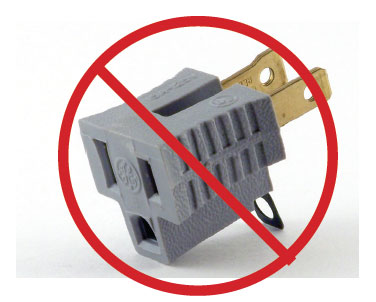
One of the best places to start is to connect all of your amps and effects into a common power bar or a rack-mount power source and surge protector. This practice ensures that the electrical circuit that is supplying your equipment is wired to the same phase. Some older homes will be wired differently at different outlets which essentially means you are combining a hot wire with a ground – through your amp and guitar! Bringing all the electrical grounds together reduces the risk and is a trick that studio engineers have been using for years.
Eliminating Ground Loops
In any audio system there are two grounds. One is the electrical safety ground; the other is the
audio ground. When you connect two pieces of gear together, you are joining these two grounds together. This can create what is commonly known as a ground loop. This can introduce 50 or 60 cycle hum into your guitar system which can be anywhere from slight to extreme, depending on the equipment at hand.
The best way to eliminate a ground loop is to isolate the two audio sources from each other
using a transformer.
A transformer is basically a magnetic bridge. In other words, current goes into the primary coil
and is ‘transformed’ into a magnetic field. The magnetic field is then guided to a secondary coil
where signal is produced. Because the input and output are not connected – they are magnetically bridged – any DC noise that may be problematic is eliminated. This is because transformers only pass alternating current (AC) not direct current (DC).
It is important to note that not all transformers are created equally. High performance transformers as made by companies such as Jensen employ nickel core materials, special ultra-thin wires, precise winding techniques and various types of shields. These ‘passive devices’ transfer the signal without introducing phase shift, distortion or artefact.
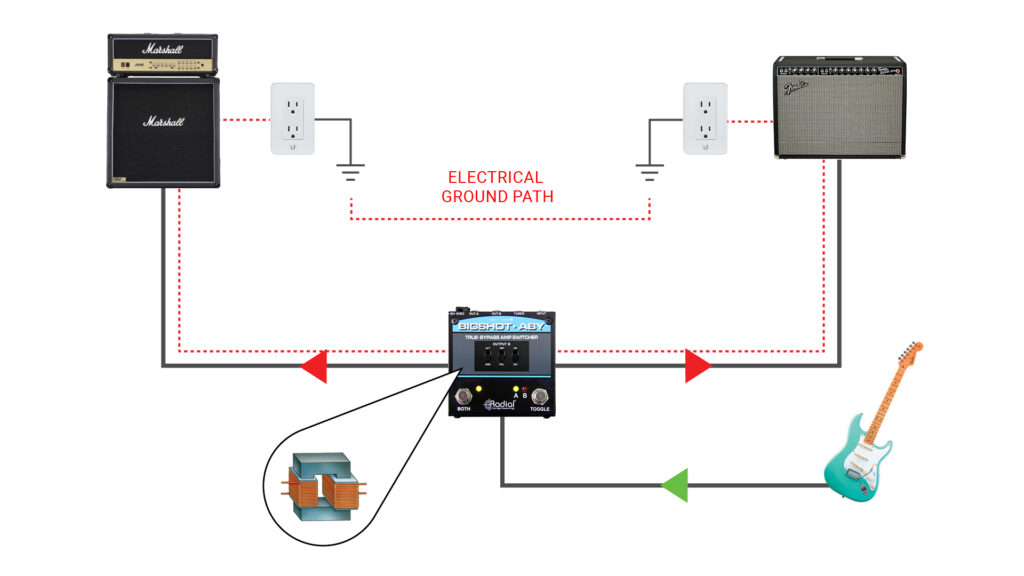
Buffers and Managing Impedance
Electric guitars are referred to as hi-Z or high- impedance instruments. Where a balanced microphone will have an impedance of around 200 to 600 ohms, a guitar will be in the 7,000 to 16,000 range (10,000 ohms typical). Since high impedance circuits are more susceptible noise, a good option is to buffer the signal before driving a number of pedals or long cables. A buffer is a unity gain amplifier that does not boost the signal; it merely drives it at a lower impedance which in turn will reduce noise.
Although this sounds easy enough, most tone savvy guitarists will tell you they hate the sound of buffers. This is because most buffers employ integrated circuits (ICs or chips) to amplify the signal. The chips deliver huge amounts of positive gain (+) while adding huge amounts of negative feedback (-) to control their output. Combine a (+) with a (-) and you are sure to screw things up! Radial buffers employ discrete components (individual transistors, resistors and capacitors) and our unique class-A circuitry to eliminate negative feedback while maintaining the tonal integrity of the original signal.
Further, the ‘sound’ of a tube circuit – or guitar connected directly to your tube amp – sounds very different when a buffer is introduced in between the two devices. We figured this out a long time ago during the development of the JD7 Injector – a high end multi-output guitar
signal buffer. By adjusting the load using Drag control, you can tailor the tone to replicate the sound as if connected directly to your amp.
Plugging it all Together
There are some devices such as fuzz pedals and wah-wahs that react directly with the pickup.
In other words, if you place a buffer in front of your wah, it will sound different. A better solution is to employ an effects loop pedal like the BigShot EFX that allows you to take your fuzz and wah out of the circuit when not in use.
Once all of your pedals have been put in the chain, you can then send the final output to a device like the BigShot ABY, Twin City or Switchbone. All of these incorporate isolation transformers to eliminate ground loops.
As a side note, if you look inside the JD7 Injector, you will note that it has individual buffers for each output and these drive a bunch of Jensen transformers. Transformers are passive devices. If you send you guitar directly into a transformer, the tone will change. By first buffering the signal, you will dramatically reduce the tonal effect of the transformer. With guitarists as diverse as Carlos Santana, John Petrucci, and Steve Vai all using Radial buffers, you can rest assured that the natural tone of your guitar will not be compromised.
With a high quality buffer you can easily drive cables upwards to 15 meters (50 feet) without
noise.
Hear from the Tech Team as they discuss ABY Switchers and how to handle noise.

